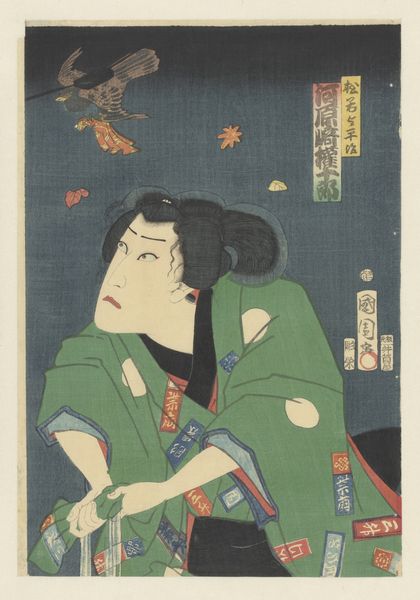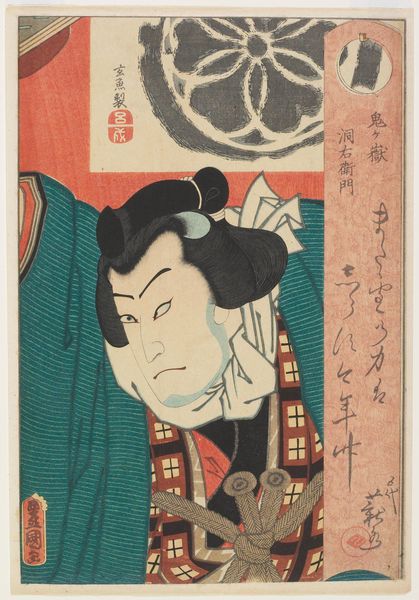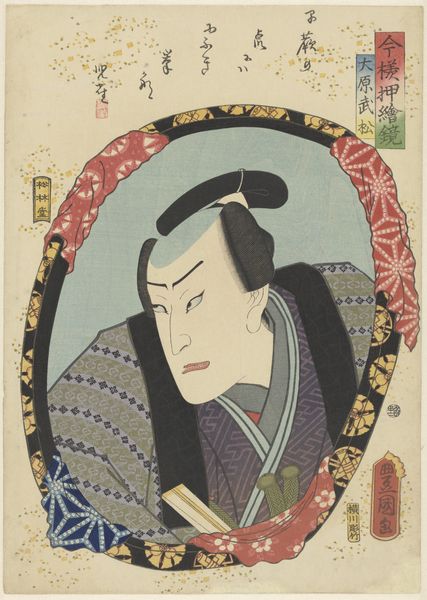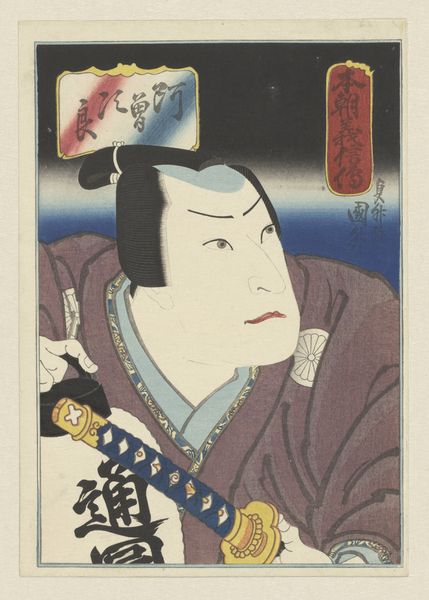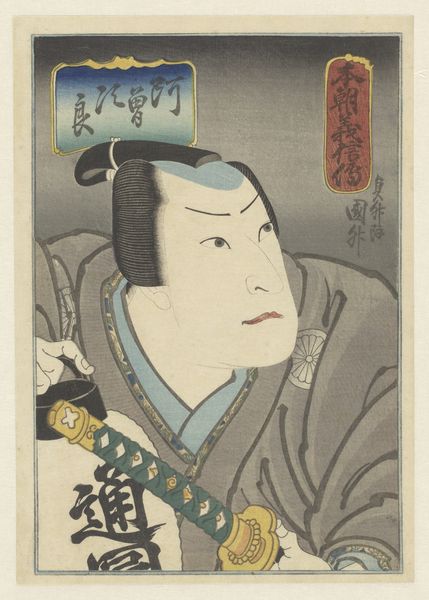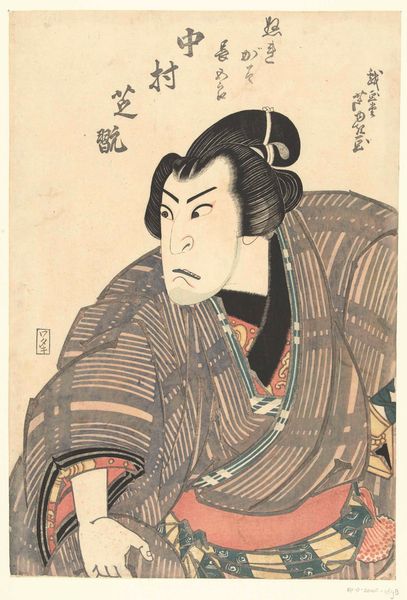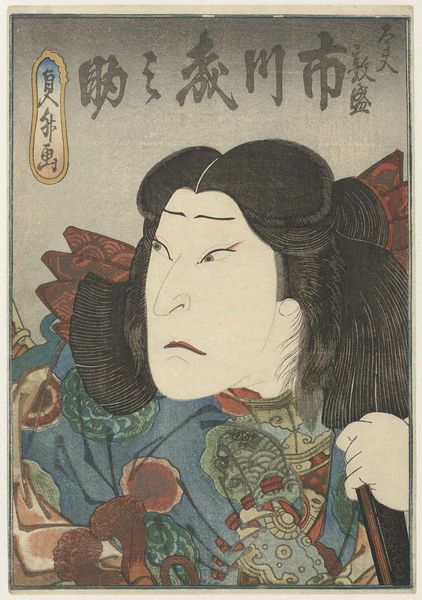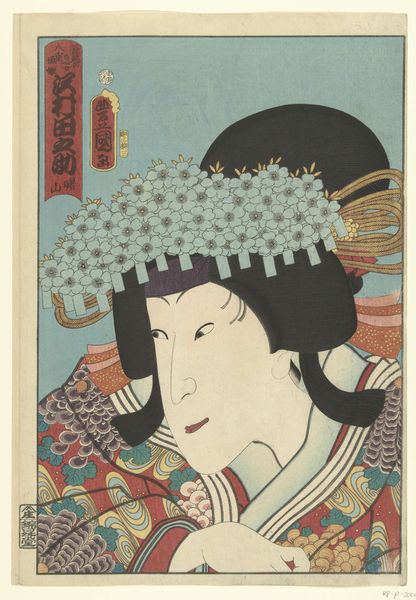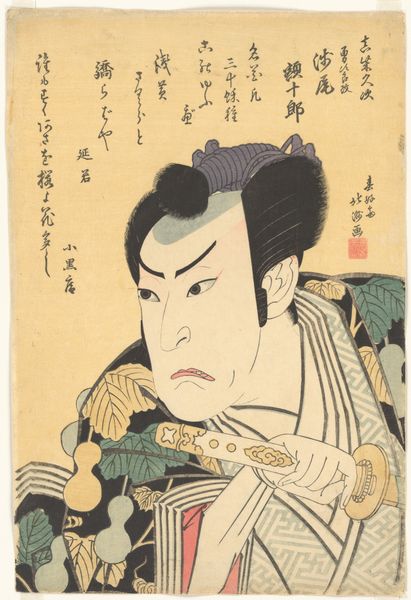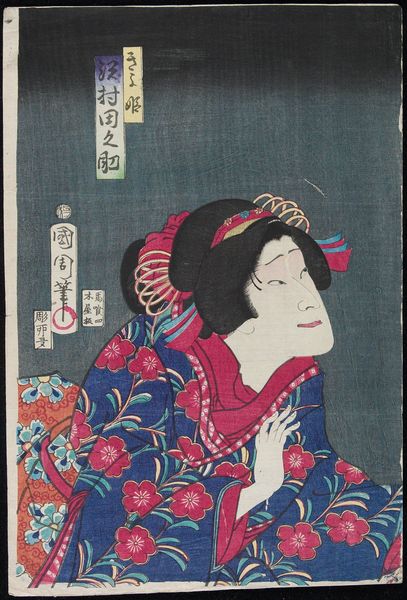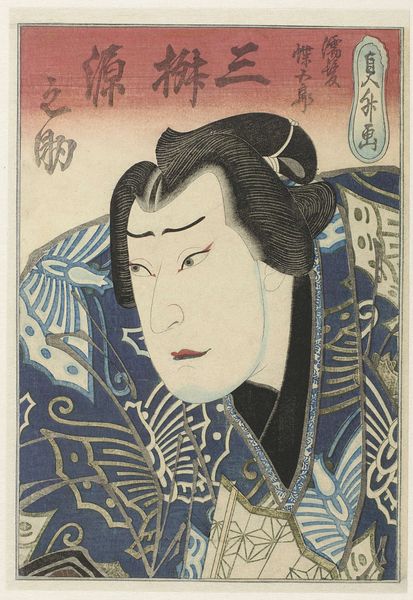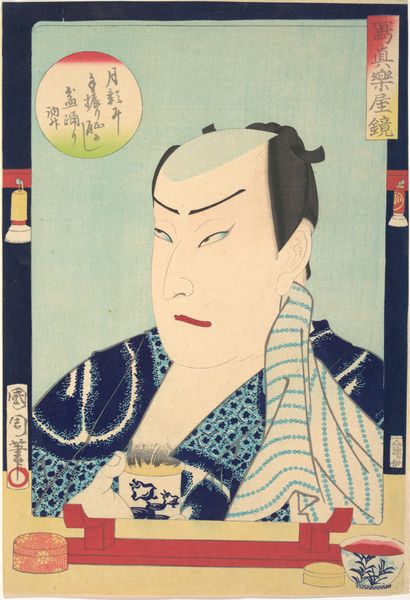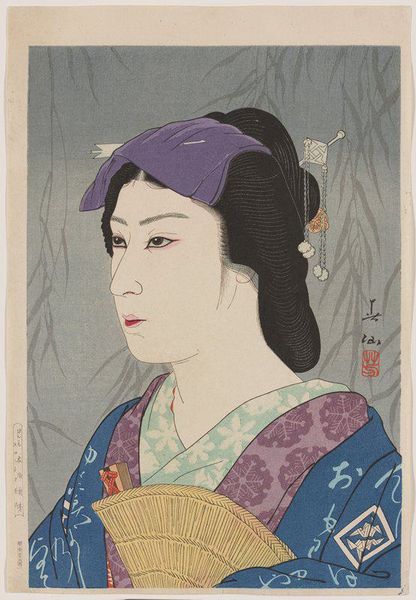
print, woodblock-print
#
portrait
# print
#
caricature
#
asian-art
#
caricature
#
ukiyo-e
#
figuration
#
woodblock-print
Dimensions: height 263 mm, height 183 mm
Copyright: Rijks Museum: Open Domain
Editor: This is Utagawa Hirosada's woodblock print from 1848, titled "Kataoka Dadô II as Chôgorô". It’s part of the ukiyo-e tradition, and it looks like a portrait of a kabuki actor. The expression on his face is intriguing; he seems caught between emotions. What’s your take on this piece? Curator: Well, first it's important to understand ukiyo-e wasn't just "art." These prints functioned as popular culture – think celebrity endorsements and theatrical posters rolled into one. They were consumed widely, often cheaply, by the burgeoning urban population. Now, thinking about that context, what might this image say about celebrity culture and its relationship to theatrical performances during this time? Editor: It suggests a fascination with actors and the roles they play, almost like early film stars! Curator: Exactly. The print becomes a form of documentation, preserving not only the likeness of Kataoka Dadô II, but also aspects of the performance and its reception. This brings up an interesting idea about art's public role. Do you see this piece, and others like it, as playing a democratic role, giving access to the elite world of Kabuki to ordinary people? Or is it more about reinforcing hierarchies and celebrity worship? Editor: I guess it's both? It democratizes the image but still upholds the status of the actor. Something for everyone, and reinforces existing order. Curator: Precisely. Ukiyo-e prints served complex social and political functions beyond mere aesthetic appreciation. Appreciating those functions transforms the print itself. Editor: Thanks! This shifted my perspective quite a bit. I see it now as much more than just an image.
Comments
No comments
Be the first to comment and join the conversation on the ultimate creative platform.
